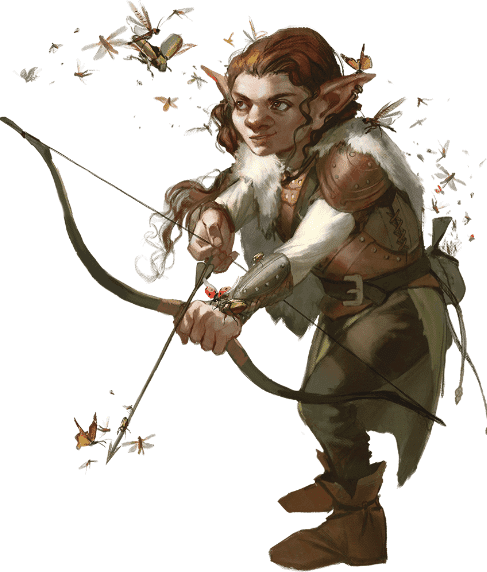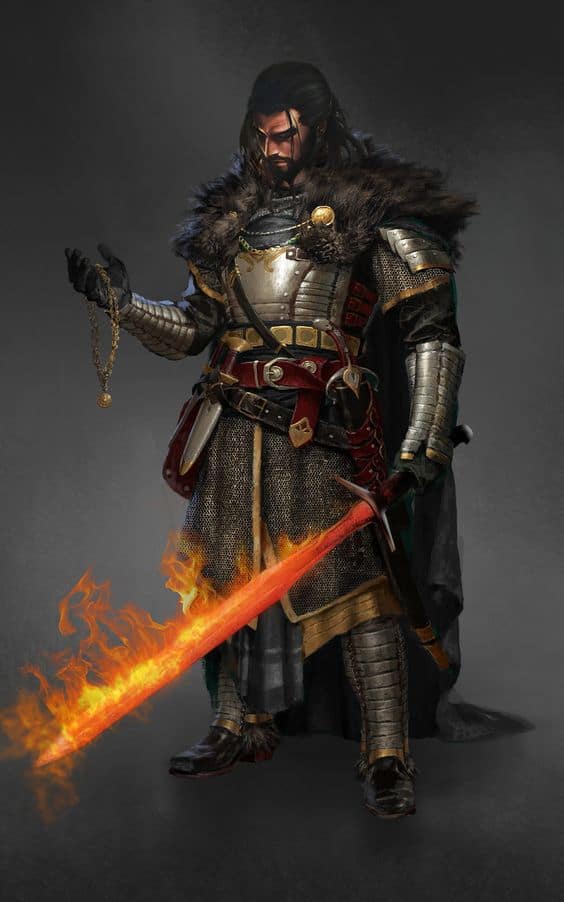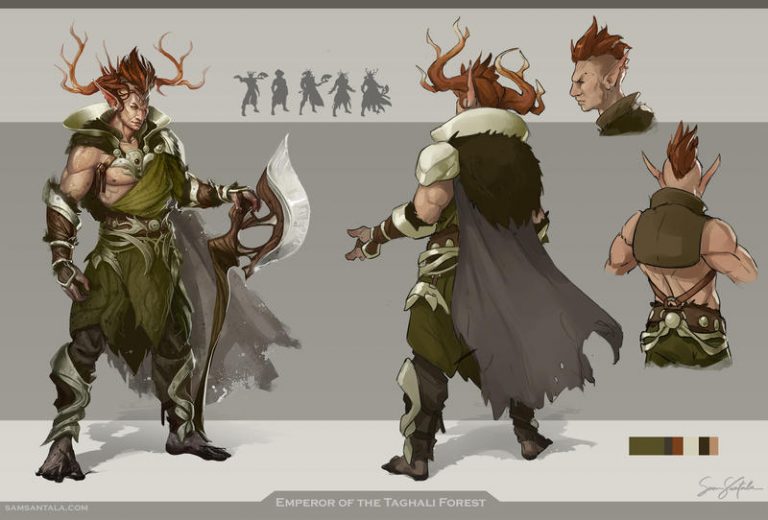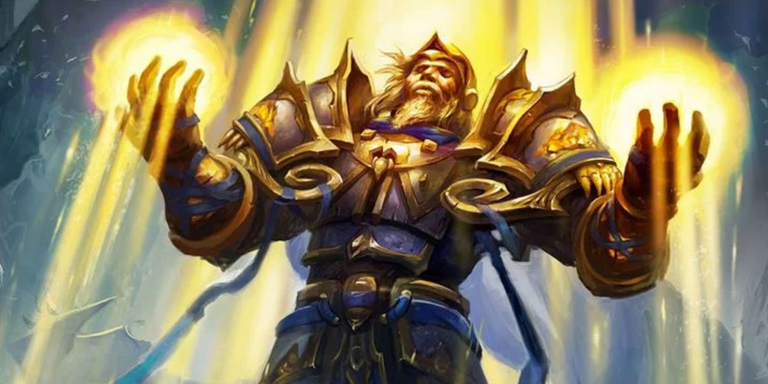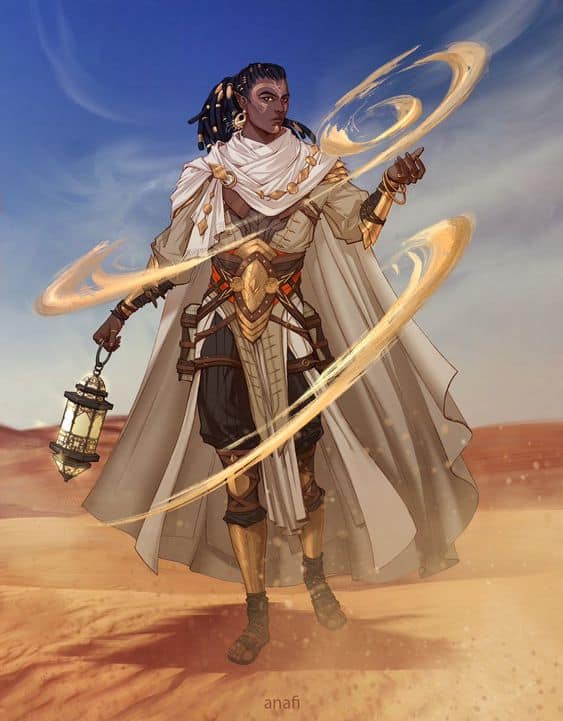D&D 5e: Path of Wild Magic Barbarian Guide

D&D 5e: Path of Wild Magic Barbarian Guide
The Path of Wild Magic subclass is found in Tasha’s Cauldron of Everything. Click here to pick up your own copy of Tasha’s Cauldron of Everything!
Role in the Party
It was certainly unexpected. No one, not the paladin astride their horse, nor the berobed cleric busily calling on the favors of the gods, or the rogue lurking in the bushes, saw it coming.
But it was the orc shaman who probably expected it the least. When all 250lbs of frothing Barbarian suddenly blinked out of existence, only to reappear a moment later, surrounded by a burst of butterflies that dissolved into pretty colors. Right at the shaman’s side.
One swing of an ax later and the skirmish was as good as over. This is a good thing, too, because as the Barbarian screamed his victory to the skies, every mushroom in the woodland glade spontaneously exploded…
Front-line warriors who lose none of their power despite channeling random magical effects, the Path of Wild Magic can be hard to predict, but it’s always effective. This guide delves into subclass features, build paths, feat and skill choices, and other ways to build the character.
Epic
Good
Meh
Bad
The Path of Wild Magic subclass is found in Tasha’s Cauldron of Everything. Click here to pick up your own copy of Tasha’s Cauldron of Everything!
Path of Wild Magic Features
Magic Awareness: At 3rd level, the subclass can open their awareness as an action, detecting all spells and magic items within 60ft, as long as they’re not behind total cover from you. The ability can be used an amount of times per day equal to your proficiency bonus.
This is basically a boosted Detect Magic. It’s handy, especially when you’re walking through dungeons or other hostile environments, as the range is a sphere, and big enough that you can walk into most rooms, ping out, and find any magical items or creatures that might have buffed themselves with spells.
Wild Surge: Also at level 3, whenever the Barbarian Rages, roll a d8 on the Wild Surge table as the magic in their blood produces random effects. This is the main feature of the subclass and contains most of its power budget. The effects are, in order:
Necrotic Burst: Every creature of your choice within 30ft makes a CON save, taking 1d12 damage on a failed save, and the Barbarian also gains 1d12 + level in temporary HP. Starting strong. The damage is reasonably low, but it does hit a lot of enemies. The temporary HP, on the other hand, scales up nicely and adds another defensive layer.
Flickerport: Instantly teleport to any free space within 30ft. Until the rage ends, the Barbarian can spend a bonus action to repeat the 30ft teleport every turn. This is very strong. It can get you precisely where you need to be to cause the most havoc. Because nothing messes up an enemy mage faster than a Raging Barbarian appearing right next to them every single turn.
Summon Flumph: The image of a pixie or flumph appears within 5ft of a creature within 30ft. It explodes at the end of your turn for 1d6 force damage to every creature within 5ft. Repeat this as a bonus action on your turns. This is awful. The damage is low, you’re probably only ever going to hit a couple of creatures at best, it can hurt your allies, and it eats your bonus action.
Force Weapon: One weapon you’re holding deals Force damage until your Rage ends, and also counts as a Light and Thrown weapon. If you do throw it, it reappears in your hand at the end of the turn. This is reasonable, but mostly for the. Force damage, which will bypass the damage resistance of almost everything you fight. The weapon becoming Light means if you have a second weapon on hand you can two-weapon fight with it, and having a thrown weapon is niche, but might come in useful.
Forceful Rebuke: Until the end of your rage, whenever a creature hits you with an attack, they take 1d6 Force damage. Simple, effective, take no actions. This is good. It falls off at later levels, but free damage is always free damage.
Armor of Lights: While your Rage is active, you and allies within 10ft of you gain +1 to AC. +1 to AC is a nice defensive buff, and extending it to what’s probably most of your allies is even better. This is solid and dependable, and will always be a useful thing to roll.
Floor of Vines: The floor grows flowers around your feet. All terrain within 15ft of you is difficult terrain for your enemies. This is only green because after the first round of combat, positioning becomes much less important, and a lot of enemies at later levels can fly. But this is still decent, especially at lower levels.
Blinding Bolt: A target within 30ft takes 1d6 Force damage and has to make a CON save, or be blinded until the start of your next turn. You can fire off the blast again every turn as a bonus action until your Rage ends. This is very good. Landing the Blinded condition against a key enemy shuts down their offensive output, and makes it much easier for the entire party to hurt them. Firing this every turn is more than worth a bonus action.
Bolstering Magic: From 6th level, the Barbarian can channel power into their allies to provide magical buffs. This ability can be used an amount of times per day equal to your proficiency bonus. The ability gives one of a pair of bonuses:
For 10 minutes, whenever the character makes an attack roll or ability check, they can add a D3 to the result. This is basically a minor Bless, and it’s a great buff to hand out to party members, or even yourself, before a big fight, and can be used in non-combat encounters for skills, too.
Roll a D3, and a character with spell slots regains one spell slot, up to the spell level of the number rolled. Paladins especially will love you for this. Main spellcasters can also get some use out of it, especially if they’ve run out of low level slots for utility spells.
Unstable Backlash: From level 10, whenever the Barbarian takes damage or fails a save during their Rage, they can spend a reaction to reroll their Wild Surge result, and apply the result.
This is surprisingly powerful. Rolling one of the few bad results on the table is irritating, but the biggest benefit here is the fact that you’re getting another use out of many of the effects, just for spending your reaction.
Controlled Surge: From 14, whenever the Barbarian rolls for a Wild Surge, they roll two dice and choose which one to use. Doubles lets them choose any result on the table.
Considering how often you’re going to be rolling Wild Surges at this level, (at the start of your Rage, and potentially as a reaction every turn) getting a little more consistency out of the ability is massive. This is just exceptionally powerful, and something the character is going to use again and again.
Strengths
It might sound strange, but the Path of Wild Magic is a surprisingly supportive Barbarian subclass. Many of the options on the Wild Surge table don’t deal very much damage but do limit enemy options, or in one notable case, directly buff allies around you.
This is reinforced by the fact that, as the character levels, they gain the ability to directly buff their allies, with some surprisingly powerful and long term effects, as well as cycle through Wild Surges until they get the one they want.
None of this detracts from the base abilities of the Barbarian, either. Wild Magic Barbarians are more than capable of picking up the biggest weapon they can wield and wading into combat, supporting themselves with their magical abilities.
As the character levels, they gain a lot of ways to further enable their Wild Magic, shifting bonuses every single turn, and almost guaranteeing that they get a useful result.
All of this comes together into a character that’s as comfortable as any other Barbarian in the midst of combat, but is also surprisingly handy outside of combat, where the Barbarian generally suffers, with limited ability to impact the party. But the simple ability to throw out buffs and search out magic is a constant thing. Feats and multiclassing can also really open up the options available to you because the Path of Wild Magic also plays surprisingly well with other classes.
Weaknesses
You would think that randomness and chaos might be the downside to this class, similar to the Wild Magic Sorcerer.
You’d be wrong. The Wild Surge table is much smaller than the Wild Magic table, with defined rules for when and where to roll on it. Almost everything you can roll is excellent, and as the character levels, they gain multiple ways to manipulate the results.
Instead, the Wild Magic Barbarian has the same mundane weaknesses as every other Barbarian. Limited ranged options, and vulnerability to being debuffed or disabled, especially by magic.
Your job is to go in and hit things as hard as possible. Often, that makes you a target, and it’s common to be focused by several enemies at once. Expect smart GMs to throw multiple saving throws your way, and failing a key save against a stun, or worse, a dominate, can make encounters much more difficult.
The Wild Magic subclass also offers nothing in the way of ranged combat, so encounters heavy in ranged enemies, or worse, enemies that can fly away from you, can be hard to deal with. Pack a bow, or find some way to pick up a ranged cantrip.
Best Race Options
Half Orc: The Half Orc is a perfect Barbarian, and meshes cleanly into the path of Wild Magic. Proficiency in Intimidation is the least useful thing here. Darkvision, a bonus to critical damage, and the ability to stay at 1HP once per day when you should be dead are all incredible things to slot into this character.
Githyanki: The stats are fine, though the INT bonus is a little strange. However, a language, and a grab bag of random proficiencies, are great out of combat bonuses, as is Mage Hand, as well as two mobility spells, which lean into the wild magic of the class.
Shifter: Perception, Darkvision, and the ability to shift as a bonus action once per short rest turn you into a hunter of magic. Beasthide makes you tough, adding a ton of temporary HP and AC, and Longtooth has exceptional stats and gives you another weapon. The others are less useful, but can still work.
Choosing the Right Skills
Barbarians are limited in skill slots, so make choices that matter.
Athletics and Perception are near essential to what the class wants to do. You’re going to be significantly better at Athletics, but having the option to spot enemies and traps before they become a problem is huge and ties directly into the Barbarian’s Danger Sense.
With remaining skill slots, take utility choices. Stealth is a fine option for many Barbarians, who won’t be wearing heavy armor to limit it. Survival is thematic and can be handy in many campaigns. Knowledge skills might be handy, too, especially Arcana, if you want to understand all of this magic that the other classes keep using, and you sniff out with your Magic Awareness feature.
Fitting Feats
Great Weapon Master: There are very few Barbarians who don’t want this feat because it’s such a big spike in combat effectiveness and damage. The Reckless Attacks feature helps to counteract the attack penalty, as does your Bolstering Magic ability. Everything else is pure money.
Ritual Caster: Barbarians typically lack things to do outside of combat. While you need a positive mental stat for this, taking 13 INT to grab ritual caster adds a whole lot to a build. Even just having a familiar on hand is a huge boost in scouting and utility, and that’s only one spell.
Plus, nothing stops you from hunting down some evil wizards, laughing off their magic, hitting them round the head, and running away with their spellbooks. Just get someone to read the big words to you, and you’ll be able to learn all of their ritual spells, too.
Chef: Don’t laugh! Chef is a genuinely excellent feat for Barbarians. A bonus to CON is a great start, and free healing for the entire party whenever you short rest, plus the ability to cook special treats that offer anywhere from 4 to 36 temporary hit points spread amongst the party is surprisingly impactful. Plus, the image of a hulking Barbarian carefully frosting a bunch of magic-infused fairy cakes to give to their party is incredible. Alright, you can laugh now.
Optimal Backgrounds
Sailor: Two perfect skills, (literally the two a Barbarian should always take) plus proficiency in Water Vehicles and Navigator’s Tools. These are excellent in nautical campaigns, but even if you’re landlocked, they make for great flavor.
Folk Hero: Two decent skills, Land Vehicles and a set of Artisan’s Tools are a wide variety of abilities to be getting along with.
Outlander: Athletics and Survival are good, as is another language. A musical instrument probably won’t come up, but it’s a nice little piece of fluff to decorate your character sheet with.
Multiclassing Options
Rune Knight Fighter: The Rune Knight has perfect synergy with the Barbarian in general, and Wild Magic in particular. 3 levels in this subclass offer so much that it’s almost criminal not to take this.
To begin with, the basic Fighter chassis offers a fighting style, and Action Surge, so you can take the Attack action twice on especially important turns.
But Rune Knights gain two runes that give passive bonuses to abilities, as well as usable active effects, many of which are incredibly potent. On top of this, the character can shift into a Large form that deals even more damage, an amount of times per day equal to their proficiency bonus. All of this is excellent for a main, frontline fighter, and well worth taking 3 levels for.
Peace Cleric: The Peace Cleric has one ability that’s so powerful it’s worth taking the multiclass purely to gain access to it. Emboldening Bond. This is a 10 minute boost to essentially all of your rolls, that scales with character level, not Cleric level, and can be used on multiple party members.
It also stacks with the bonuses from Bolstering Magic; adding a d4 and d3 to an attack roll for everyone in the party is good. On top of this, access to the Cleric spell list for in and out of combat buffs and healing, as well as cantrips is just so good for a one level dip.
Phantom Rogue: It might sound ridiculous, but Rogues and Barbarians go together incredibly well. Firstly, nothing stops you from Sneak Attacking, as long as you’re wielding weapons that allow it (rapiers and short swords are good options.)
Everything else here is fantastic, too. Expertise in two skills, more skill options, Cunning Action for mobility, plus the Phantom’s ability to grab any skill or tool proficiency after taking a rest, and a little bit more damage are all excellent ways to make the character much more useful outside of combat.
Would I recommend playing a Path of Wild Magic Barbarian?
Is the Path of Wild Magic the strongest Barbarian subclass? No. It trades in a lot of raw, directed power for the randomness inherent in the Wild Surge ability. Sometimes, you’ll roll the Flumph and do nothing, and sometimes the AC bonus turns a key hit into a miss and turns the entire tide of combat.
But this doesn’t detract from the character, at all. As long as you’re fine with a touch of chaos in your games, (and you should be. Every time you roll a D20, you’re throwing yourself on the whims of fate!) The Wild Magic Barbarian is a solidly designed subclass that’s been gifted with several excellent abilities. But most importantly, it’s incredibly fun to play, not just for you, but for your party, fostering bonds between characters, and moments between players. And, at the end of the day, that’s why we play D&D.




